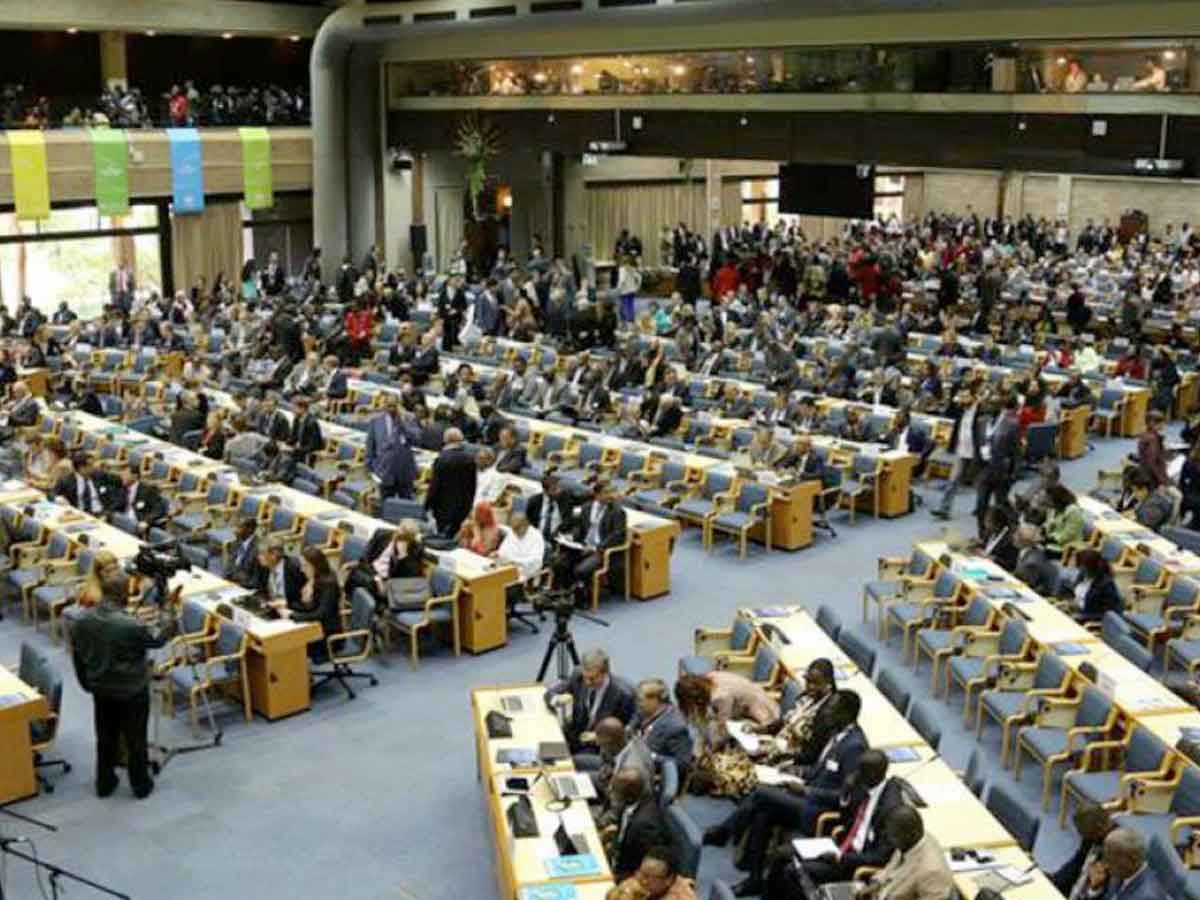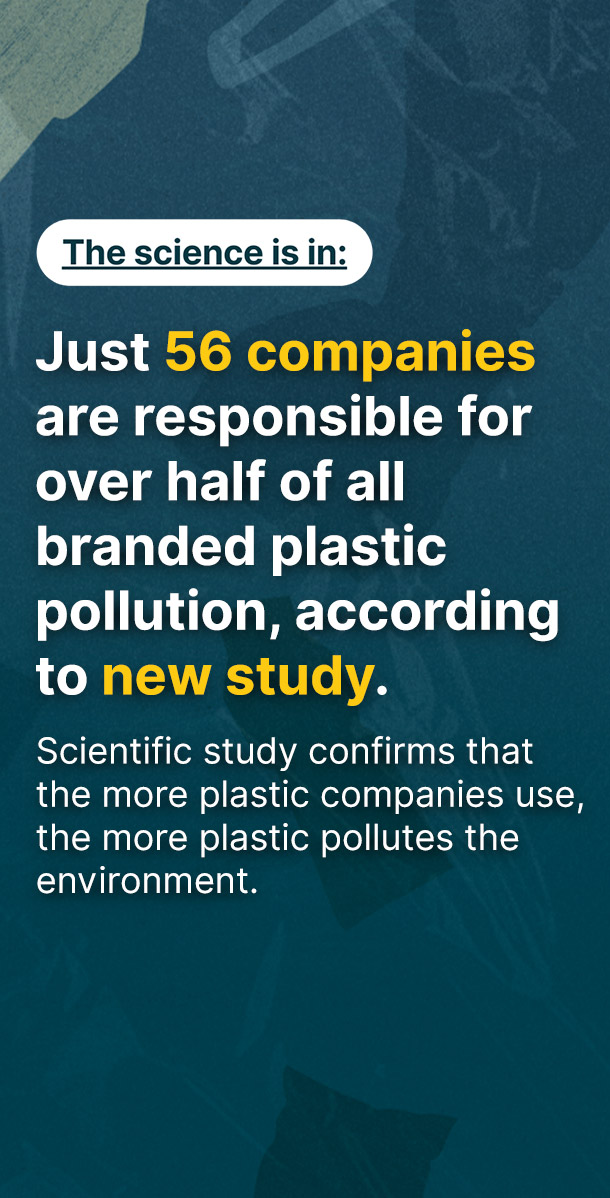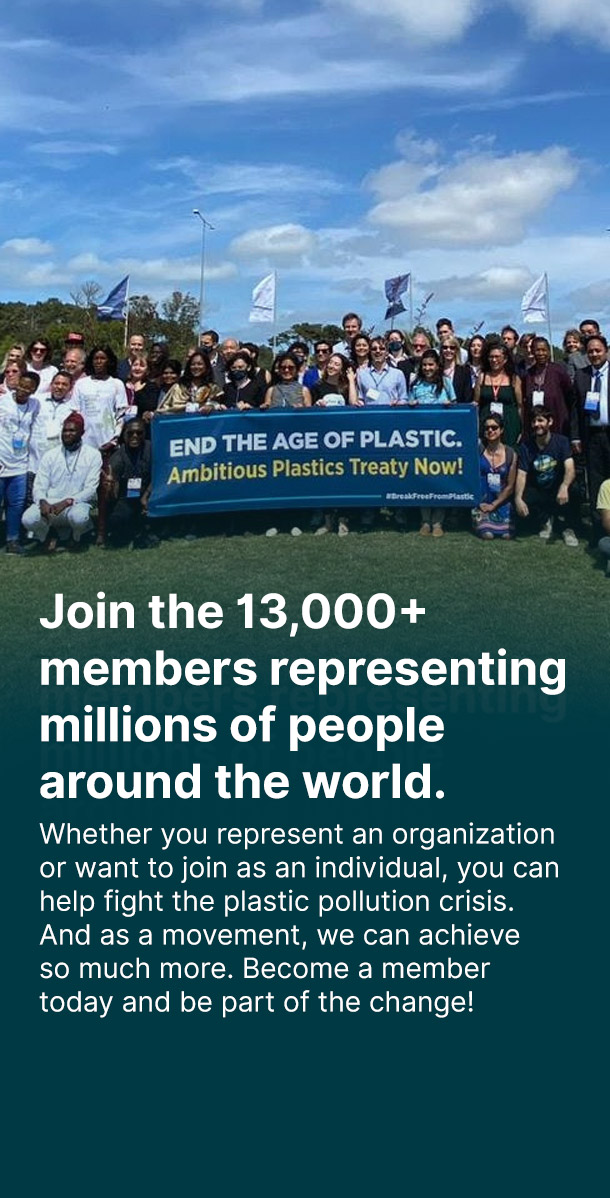UNEA, the official governing body of the UN Environment Programme (UNEP) and the highest-level governing body on international environmental matters, meets every two years. This year’s theme, “Innovative solutions for environmental challenges and sustainable consumption and production,” is particularly salient in the fight against plastic pollution.
Already, UNEA has taken a significant step in spearheading action against marine plastic pollution, establishing an expert group that has met over the past year to discuss global strategy options. The results of the group’s research and discussions will be a centerpiece at UNEA 4, where governments will decide on the next steps forward.
But in order to fix a problem, we must first correctly identify what the problem is, and that’s where UNEA’s got it wrong. UNEA’s current emphasis on marine plastic pollution and recycling appears misguided in that respect: It masks the role of production in efforts to “clean up” plastic waste, and hides from public view many of the hidden costs of plastic. Environmental and health impacts plague society well before questions about disposal arise, but end-of-life solutions (like those that target marine pollution alone) ignore these issues entirely. That’s why we’re pushing for international regulations to address plastic pollution throughout its lifecycle, not just after we’ve thrown our waste into the trash.
With CIEL’s new report in hand and bolstered by the progress made since UNEA 3, we feel hopeful that the world can shift its mindset on plastic. But we cannot do it alone: Civil society and people around the world must demand that governments attack plastic pollution at its source, and there isn’t a better opportunity to do so than leading up to UNEA 4.
Just a marine pollution issue?
When you think of the plastic crisis, you might envision the clutter on our coastlines, a turtle with a straw in her nose, or the Great Pacific Garbage Patch. It’s not coincidental that these images come to mind: There has been growing advocacy to fix the problem of ocean plastic since countries adopted the first resolution on marine plastic litter at UNEA 1 in 2014. But unfortunately, the resolution only addresses marine pollution and end-of-life solutions (such as plastic waste management) — meaning that it overlooks a broad range of solutions that would have a deeper impact on the plastic crisis.
Ocean plastic is a big problem, but it’s far from the only problem, and tackling plastic pollution once it gets to the ocean won’t address its root causes and a multitude of other concerns. When we focus on the oceans alone, we miss the bigger picture.
In reality, plastic is a global health crisis hidden in plain sight, and its production is amounting to more than the world can manage. The lifecycle of plastic starts at oil and gas wellheads, as over 99% of plastic is made from fossil fuels. There, extraction and transportation of fossil fuels release an array of toxic substances into the air, including those with known health impacts like cancer, neurotoxicity, reproductive and developmental toxicity, and impairment of the immune system. Plastic then moves to the manufacturing plant, where harmful chemicals such as flame-retardants and plasticizers are added. These chemicals eventually make their way into our water sources and food, and as a result, our bodies.
And that’s just a hint of the health concerns associated with plastics. Most people around the world are exposed not only to harmful substances associated with extraction and production, but also those imposed through consumer use and packaging, during plastic waste management, or through cascading exposure as plastic degrades in the environment. (Startlingly, a recent study found microplastics in the stool of 100% of human subjects across the world, finding up to 9 different plastic resins in some individuals.) So even at its earliest stages, plastic can pose significant threats to our wellbeing.
Worse yet, even if we substantially improve our waste management systems, it will be impossible to safely dispose of the mountain of plastic coming our way: Even as the world works to confront the plastic crisis, plastic production is projected to increase by as much as 40% in the next decade. Solid waste generation will more than double by 2025, and developing countries such as China and Malaysia are rightfully closing their borders to foreign waste dumping. The situation seems more dire given that between 1950 and 2015, only 9% of the world’s plastic was actually recycled. That’s why the question needs to shift from “how can we deal with this waste?” to “how can we reduce plastic production and its associative harms in the first place?”
Focusing on holistic solutions at UNEA 4
At UNEA 4, CIEL and the “plastic task force,” a group of over twenty civil society organizations from the Break Free From Plastic Movement and beyond, will be pushing member states to ask the latter question and address the entire plastic lifecycle. Thanks to prior efforts, that shift has already begun: At UNEA 2, member states framed plastic as a global issue requiring a global response. At UNEA 3, countries established an expert group to look at the issue, which later expressed the need to focus on prevention and consider the full life cycle of plastics — a win for CIEL and partners advocating for holistic solutions.
Building on this momentum, countries at UNEA 4 will have the opportunity to address the full scope of the problem by adopting a resolution that strengthens global governance on plastic pollution. The draft resolution, proposed by Norway, Sri Lanka, and Japan, would establish a working group whose mandate is to develop a global treaty dedicated to addressing plastic at every stage of its lifecycle. Although treaty negotiations are not expected to be launched this year, that the global community is re-framing the issue in anticipation of negotiations is critical: Identifying the problem and solutions correctly could preserve time, political willpower, and our planet.
Other Issues to Watch at UNEA 4
UNEA 4 will address a myriad of environmental issues beyond plastic. Keep an eye out for the draft Resolution proposed by Costa Rica on Gender Equality and Human Rights and the draft Resolution on Geoengineering Governance proposed by Switzerland. Costa Rica’s proposed resolution seeks to promote gender equality, women and human rights, and the empowerment of women and girls in environmental governance, and Switzerland has called upon UNEP to prepare a report to unlock the mysteries surrounding geoengineering technologies before sponsoring their expansive development (a move that could, paradoxically, pave the way for the roll out of these extremely problematic approaches). Also look out for EU proposals on the Sound Management of Chemicals and Waste and on the Sustainable Consumption and Production in a Circular Economy, both of which are extremely pertinent in the fight against plastic.
What Can You Do?
In the lead-up to UNEA 4, there is opportunity to influence how the world comes together to confront the plastic crisis. So call upon your Minister of the Environment to identify the full scope of the problem and address the plastic crisis at its source. You can also demand that your local officials replicate the steps taken to confront plastic pollution in places like the EU and California. We’ll be right there with you, fighting for a healthier and more sustainable future.
Article originally appeared on CIEL.




